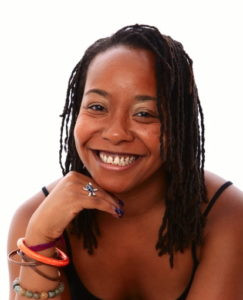The Dance World, a realm often celebrated for its expressive freedom and physical artistry, is not immune to the pervasive issue of racism. My journey as a Black dance professor began with enthusiasm and high hopes. Fresh out of my MFA program in 2014, I eagerly accepted a position at a community college to teach Hip Hop. I envisioned a collaborative environment where I could grow professionally and mentor aspiring dancers. The students were engaged, eager to learn about Hip Hop culture and movement, and I felt optimistic about my future contributions to the college and the broader dance community. However, this initial optimism soon encountered the harsh realities of racial bias within the dance world.
My first week on the job, a seemingly innocuous question from a colleague unveiled a deeply ingrained prejudice. I was asked if my hiring was attributed to my race or my actual skills and expertise. The blatant racism of the question was jarring. Instead of directly addressing the offensive nature of the inquiry, I defensively listed my qualifications: training in various dance styles, experience teaching, and my MFA in Choreography and Performance. This encounter, while upsetting, was just the beginning of a series of experiences that highlighted the systemic racism present even within the ostensibly progressive dance world.
Years into teaching Hip Hop at that institution, it became dishearteningly clear that my opportunities to expand my teaching repertoire were limited. Excuses ranged from studio space constraints to scheduling conflicts, but the underlying message was unmistakable: as the Black Hip Hop teacher, I was confined to a specific box. My presence fulfilled a diversity quota, superficially diversifying the program without genuinely valuing my broader skillset. Despite my professional training and qualifications to teach various dance forms, I was consistently labeled and treated as solely “the Hip Hop teacher.” While I genuinely love teaching Hip Hop, I deeply resented the implicit assumption that my Black identity dictated the only style I was capable of teaching. This experience is a common thread for many BIPOC artists in the dance world, where talent and training are often overshadowed by racial stereotypes.
Throughout my career, I have navigated a landscape riddled with racist microaggressions and persistent attempts to confine me within racialized expectations. The cumulative effect of students and colleagues questioning my authority and expertise – exemplified by a colleague’s pointed question about whether I had worked as hard for my master’s degree as she had – has compelled me to directly confront these stereotypes. This experience, while deeply personal, is unfortunately not unique. It is a shared reality for many Black professionals in the dance world, and each instance, no matter how subtle, inflicts a fresh wound.
 Joslynn Mathis Reed, a Black dance professor, demonstrates her expertise and strength in the dance world, showcasing a hip hop dance pose.
Joslynn Mathis Reed, a Black dance professor, demonstrates her expertise and strength in the dance world, showcasing a hip hop dance pose.
Many Black individuals within the dance community choose to remain silent about their experiences with racism and stereotyping. This silence stems from a desire to avoid conflict, or simply from exhaustion – a weariness born from constantly confronting disrespect, regardless of their qualifications or professional achievements. I, too, have felt this pressure, wary of being labeled the “angry Black woman” if I responded too assertively or directly. In my early career, often being the sole Black person in a room, I consciously muted my voice, already feeling under scrutiny.
However, college marked a turning point. I began to speak out against racist remarks, recognizing that silence offered no protection against prejudice. Despite our efforts and achievements, disrespect persists. Years of ballet instructors’ relentless corrections to “tuck in my behind” because it was deemed “too big” – a constant refrain of “tuck, tuck!” – culminated in a pivotal moment. I finally asserted to one professor that my body type was inherent, my pelvis naturally positioned. (My subsequent refusal to be physically corrected with a ballet stick resulted in being sent home for the day, a stark illustration of the resistance to challenging established norms). Similarly, when a director criticized my locs as distracting, hindering my movement and technique, I countered that my hair was an integral part of my body, suggesting that perhaps he needed to focus more intently. Surprisingly, he laughed, admitting I was right and that he had never considered hair as an extension of movement. These instances, while assertive, were necessary steps in reclaiming my agency within the dance world.
Yet, there have been moments when even I, emboldened as I had become, was rendered speechless by the sheer audacity of racist remarks. Pulled aside by a dance program director, I was asked to pledge that I would not raise any racial discrimination concerns against the institution, as they had faced “problems with black dancers in the past” and hoped I was not that kind of Black person. This blatant preemptive accusation left me stunned and powerless. In retrospect, I regret my silence. My respect for my professors and sheer disbelief in the moment paralyzed me. This incident underscores the insidious nature of racism in the dance world, where prejudice can be both overt and subtly woven into institutional structures.
 Joslynn Mathis Reed, a Black dance professor, demonstrates her expertise and strength in the dance world, showcasing a hip hop dance pose.
Joslynn Mathis Reed, a Black dance professor, demonstrates her expertise and strength in the dance world, showcasing a hip hop dance pose.
It may be uncomfortable for some people of color to acknowledge, but racist actions and sentiments are not exclusive to White individuals. I once experienced a Black instructor attributing my skill level to having been trained by a White instructor. This comment reveals a painful truth: systemic racism permeates the entire dance community, impacting people of color as well. We are all, to some extent, participants in this flawed system, capable of perpetuating unconscious biases and contributing to the very structures that oppress us. Such ignorant and racist statements, especially when uttered by someone who shares your racial identity, are particularly disheartening. These internalized biases further complicate the struggle for true equity in the dance world.
I share these painful experiences not to dwell on negativity, but to dismantle the illusion of inclusivity that pervades the dance community and the broader arts landscape. This issue is not confined to the Bay Area; it is a widespread problem. Simply hiring people of color is a superficial gesture that does not eradicate racism. Creating truly anti-racist spaces requires a fundamental shift in power dynamics. We must change who holds positions of authority, who makes decisions, and whose voices are amplified within the dance world.
I am actively committed to fostering a more inclusive and diverse dance community in the Bay Area. My recent appointment to the Board of Directors of the Shawl-Anderson Dance Center in Berkeley is an exciting opportunity to contribute to reimagining a thriving community arts organization. I am dedicated to creating more equitable and positive environments for dancers and all artists. My vision is for a future dance world where the next generation of people of color feels a genuine sense of belonging, where their unique identities are celebrated, and where their hard work is recognized without racial prejudice. Pride in one’s Blackness or heritage should not be perceived as a threat, but embraced as a valuable asset. We must cultivate a dance world that embraces individuality and moves beyond racist stereotypes that confine dancers of color to predetermined boxes.
It is crucial to acknowledge that my experiences in the dance community have not been solely negative. I have been fortunate to have supportive mentors and collaborators from diverse ethnic backgrounds. The Bay Area, in general, is a vibrant hub for artists, enriched by its multiculturalism and diverse experiences. However, the persistent struggles with racism I have described are an undeniable and endemic part of my journey and the experiences of countless other BIPOC individuals in the dance world.
 Joslynn Mathis Reed, a Black dance professor, demonstrates her expertise and strength in the dance world, showcasing a hip hop dance pose.
Joslynn Mathis Reed, a Black dance professor, demonstrates her expertise and strength in the dance world, showcasing a hip hop dance pose.
The dance community, and the broader arts world, still has a significant distance to travel on the path to true equity and inclusion. It is imperative that we confront the damaging and limiting effects of White privilege on all members of our community. We must collectively reimagine what it truly means to value and respect the diverse contributions that each of us brings to the dance world. Only through honest self-reflection, systemic change, and ongoing commitment can we hope to create a dance world that is truly equitable and inclusive for all.
This article appeared in the Summer 2021 issue of In Dance.
Joslynn Mathis Reed hails from Detroit Michigan. Her lifelong passion for dance has taken her on a journey that includes performing with Aretha Franklin as a teenager, studying West African dance in Ghana as an undergraduate, and teaching dance to a wide range of students over the years. In addition to leading workshops and intensives, she currently teaches ballet, modern, jazz, hip-hop, dance history, hip-hop culture, and advanced technique courses at several Bay Area colleges. Joslynn founded Mathis Reed Dance Company in 2014, presenting work that explores the black experience in America through a multicultural, multiethnic lens. She has performed and collaborated with Shinichi lova-Koga, Nina Haft, Wanjuru Kamuyu, Ana Marie and Sylvia Water (Alvin Ailey Company), Heather Stockton, Mills College Repertory Company, and California State University East Bay Repertory Company. Joslynn holds a B.A. in Dance/Theater Arts from California State University East Bay and an MFA in Dance Performance and Choreography from Mills College.

